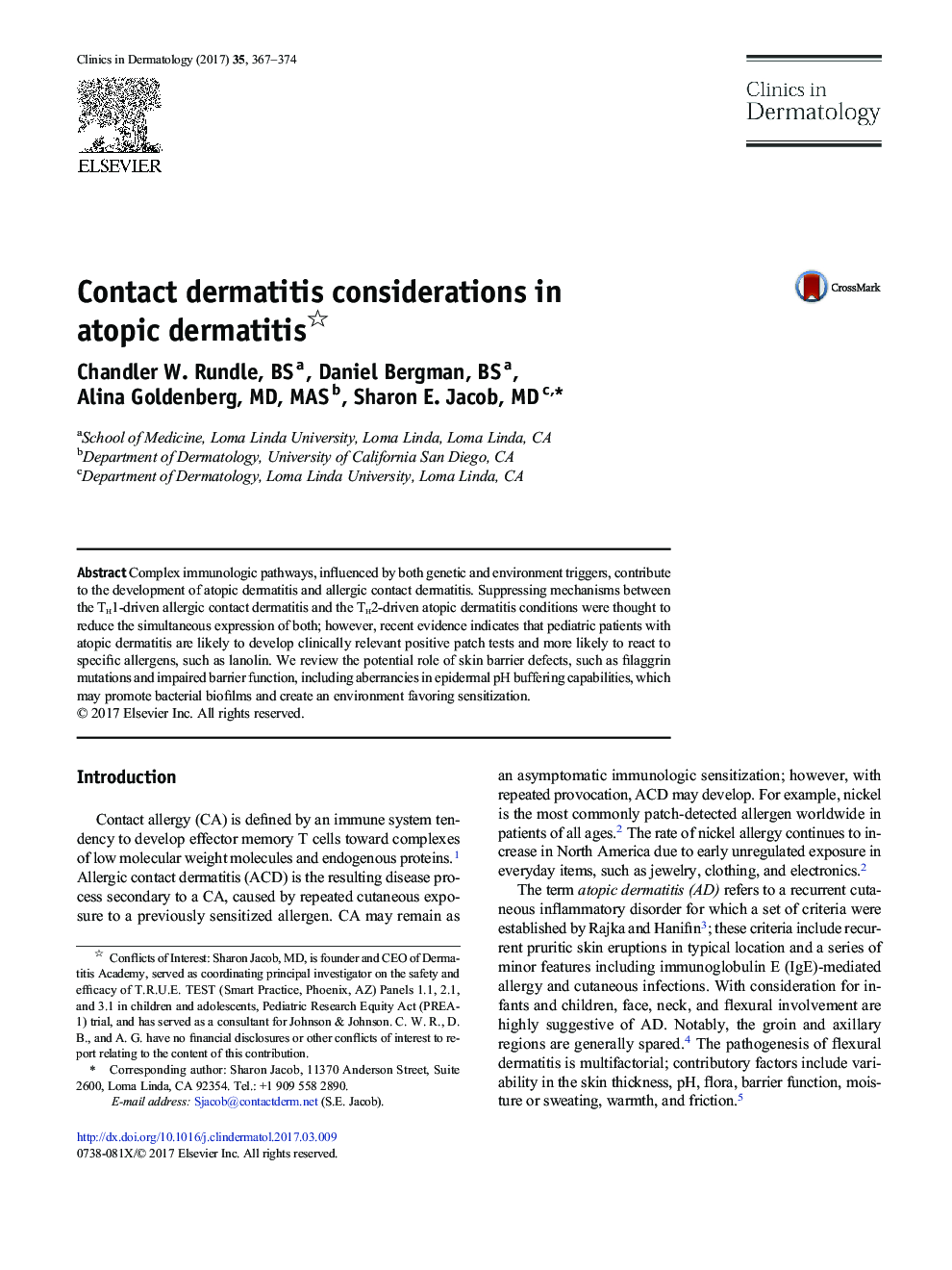| Article ID | Journal | Published Year | Pages | File Type |
|---|---|---|---|---|
| 5645656 | Clinics in Dermatology | 2017 | 8 Pages |
Complex immunologic pathways, influenced by both genetic and environment triggers, contribute to the development of atopic dermatitis and allergic contact dermatitis. Suppressing mechanisms between the Th1-driven allergic contact dermatitis and the Th2-driven atopic dermatitis conditions were thought to reduce the simultaneous expression of both; however, recent evidence indicates that pediatric patients with atopic dermatitis are likely to develop clinically relevant positive patch tests and more likely to react to specific allergens, such as lanolin. We review the potential role of skin barrier defects, such as filaggrin mutations and impaired barrier function, including aberrancies in epidermal pH buffering capabilities, which may promote bacterial biofilms and create an environment favoring sensitization.
